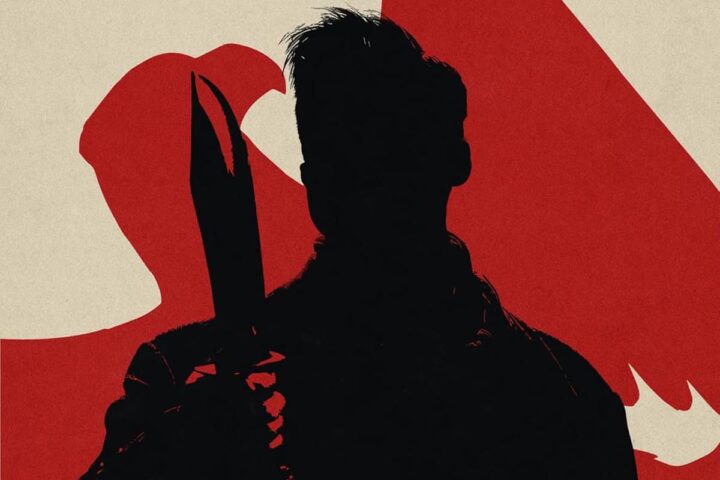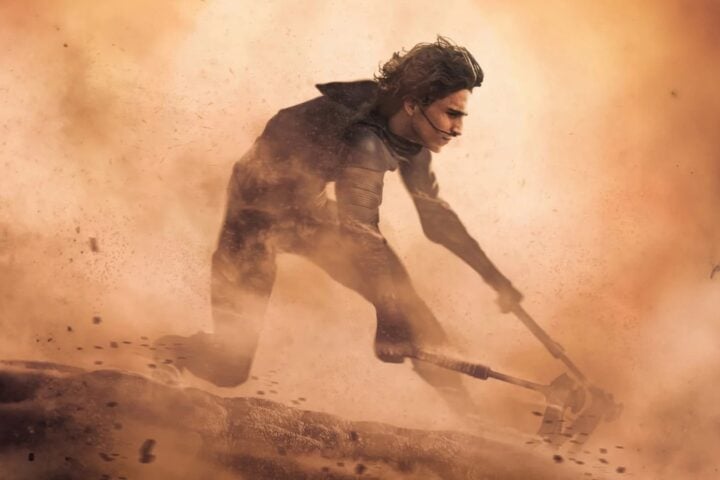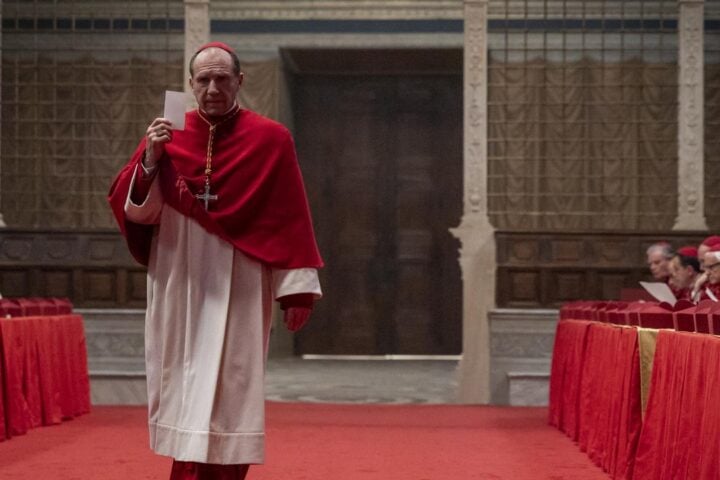Writer-director Lucile Hadžihalilović’s The Ice Tower invites comparison to a haunting passage from Dazai Osamu’s No Longer Human. Dazai’s protagonist describes being miles away from home and vomiting blood, which forms “a big rising sun flag in the snow.” Then, as he weeps, the man hears from a distance a little girl saying, “Where does this little path go? Where does this little path go?” It’s one that may as well lead to Hadžihalilović’s film, which abounds in contrasts between blood and snow, among other sensualist pleasures.
Jeanne (Clara Pacini) seems to follow paths wherever they go, without wasting time to wonder where they will take her. She runs away from her foster home in a remote region of France, where her only solace was reading fairy tales to a younger child, Rose (Cassandre Louis Urbain). It’s the 1970s and Jeanne can easily hitchhike her way to the center of town but not without having to escape the advances of a pervy driver. Jeanne clearly wants to flee to a netherworld where the emotional injuries afflicting her 16-year-old self might be assuaged. After all, that’s what fantasy is for—in literature, in cinema, and in the most spellbinding forms of identification with the faces of others we wished we were, from fairy-tale heroines to movie stars.
It makes sense, then, given the fable-esque ethos of The Ice Tower, that Jeanne would fall asleep as a derelict in raggedy clothes and wake up in the middle of a movie set, the make-up chair awaiting her. For Jeanne takes shelter in what she presumes to be a vacant building but where, as it turns out, the cinematic version of the fairy tale “The Snow Queen” that she used to read to her fellow orphan is being shot. She finds a piece of crystal on the floor before falling asleep, and like the rubbing of a lamp, a wish that she didn’t know she harbored becomes reality. The next day she’s mistaken for a background actor and finagles her way into the film-within-a-film.
As she did in Evolution, Hadžihalilović crafts a closed or parallel world here—or a limbo with its own logic somewhere between dream and nightmare. Jeanne, recalling Natalie Portman in The Professional in everything from her bob to her fearlessness, gets to roam around a realm defined by the seductive artifice, high stakes, and glamorous aloofness made possible by cinema. It’s a realm personified by the protagonist of the fairy tale’s adaptation, Cristina (Marion Cotillard), a mysterious and spoiled diva who Jeanne becomes fascinated with. Cristina responds well to the girl’s attraction, and Jeanne ends up taking a major role in the production.
The Ice Tower’s allegiance to the fairy tale might suggest that it’s all about twists and turns of plot, but Hadžihalilović pays much more attention to the sensuous qualities of cinema. From the kaleidoscopic shots that open and close the film, as though through the point of view of a child looking through an ornamental snowball, to a marvelous shot of red blood sullying pristine ice, Hadžihalilović’s camera is profoundly alive to the texture of things. It has the puerile fascination, in the best sense of the term, of a silent-cinema gaze.
Jeanne and Cristina engage in a game of seduction that we might call vampiric. Yet their emotions and desires are outsourced to the polarizing elements of their environment: hot blood sizzling against cold snow, black feathers against white leather. In the film’s most touching sequence, before Jeanne finds a place to sleep, she comes across an ice rink where girls who have a place to go are ice-skating in blissful nonchalance. She’s mesmerized by the sight—particularly by a beautiful girl named Bianca, who ice-skates with the confidence of someone immune to the ails of the world, and whose name our heroine later appropriates as her own. Indeed, how might one attain some of that poise, that coolness, if not vicariously?
Hadžihalilović’s images here aren’t propelled by dialogue or plot, articulating sorrow, abandonment, and yearning with their focus on the blades of ice skates cutting ice and the non-correspondence of gazes (namely the way Bianca stares into the distance as Cristina peers at her). It may make you think of the lusciousness of snow in Abel Gance’s silent epic Napoleon, whose images are so alive that it can make you feel as if you can actually hear the ice crunching beneath its characters’ feet. Or Mae Murray’s character in Erich von Stroheim’s The Merry Widow, for how the blinding shimmer of her jewelry and headpiece tells us half the story.
The Ice Tower is, ultimately, an aesthetic and nostalgic exercise. It’s interested not in emotion but sensation. There’s something humbling, and disarming, in Hadžihalilović salvaging the grandiosity of cinema by trudging through its bare bones—like the little girl who happens upon a kaleidoscopic crystal sitting in a dark corner of an abandoned building where cinema lives.
Since 2001, we've brought you uncompromising, candid takes on the world of film, music, television, video games, theater, and more. Independently owned and operated publications like Slant have been hit hard in recent years, but we’re committed to keeping our content free and accessible—meaning no paywalls or fees.
If you like what we do, please consider subscribing to our Patreon or making a donation.




